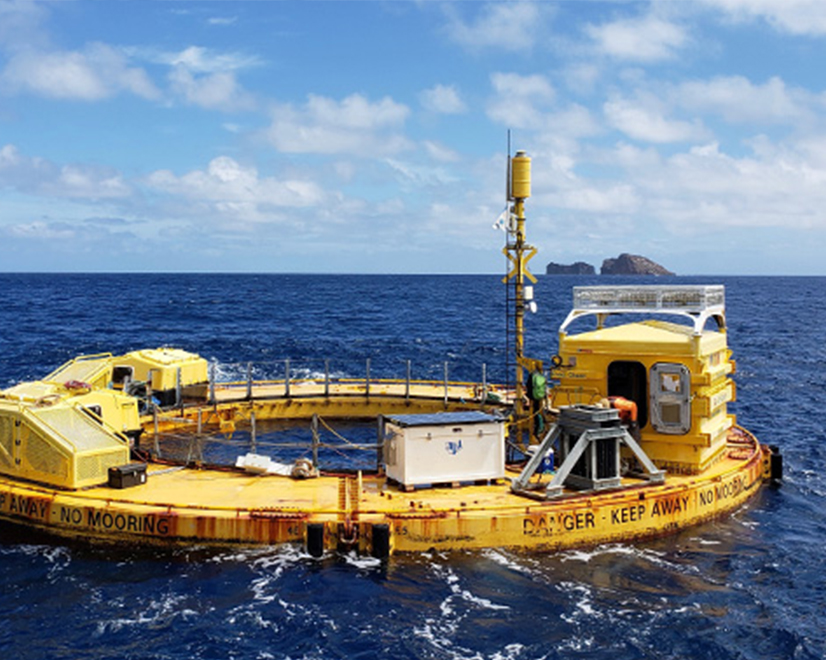
The Hawaii Natural Energy Institute (HNEI) will receive $6 million from the Naval Facilities Engineering Command to research wave energy conversion technology.
Part of the University of Hawaii, the HNEI will use the funds to test pre-commercial wave energy converters (WEC) at the U.S. Navy’s Wave Energy Test Site (WETS), just off Marine Corps Base Hawaii in Kaneohe Bay, Oahu, which is the only grid-connected wave energy testing site in the country. HNEI will also use a portion of the funds to test new energy infrastructure at WETS, such as subsea power storage and connection modules to allow WECs to charge various equipment and autonomous undersea vehicles (AUV).
The funds will also help HNEI explore other technologies, such as a floating oscillating water column WEC, an integrated breakwater WEC system to generate energy from waves while protecting shorelines, and a small-scale, rapid-deployment WEC for energy generation and desalination close to shore.
The University of Hawaii said in a press release that the value of wave energy is in its reliability, noting that it is “relatively consistent throughout the day and night and can be forecast with good accuracy out to a week or more, enhancing grid managers’ ability to plan for its contribution to the overall generation mix on the grid.”
The university will partner with the University of Washington and Oregon State University to “advance many such concepts under these new funds.”
HNEI set a 2021-2024 timeline for running WEC tests, including environmental monitoring, power and survivability performance assessments and additional logistics support to the Navy and to WEC developer companies.
“We are excited by the Navy’s latest investment in our work to advance wave energy through our support of WETS, particularly as it allows us to expand our research into new areas of relevance to offshore applications, such as autonomous vehicle recharge for ocean observing purposes,” Patrick Cross, research specialist in marine energy at HNEI and principal investigator for the WETS support program, said.
Nate Sinclair, WETS program manager at the Naval Facilities Engineering and Expeditionary Warfare Center, said the Navy will gain its own benefits from the research.
“Along with continuing to provide in-situ testing infrastructure and support for wave energy power to shore, we’re now making substantial investments for pursuing technology development that will lead to providing power in remote locations for Navy applications such as persistent surveillance and AUV recharging,” he said.
On its website, Hawaiian Electric Company (HECO) notes that ocean energy “is continually renewed and available 24/7,” and that “just a small portion of the energy stored in the oceans could power the world.” HECO had partnered with the Office of Naval Research to connect a 40-kW experimental buoy, developed by Ocean Power Technologies, to Oahu’s energy grid. The utility is also currently working on a power purchase agreement with an unnamed ocean thermal energy conversion company.

